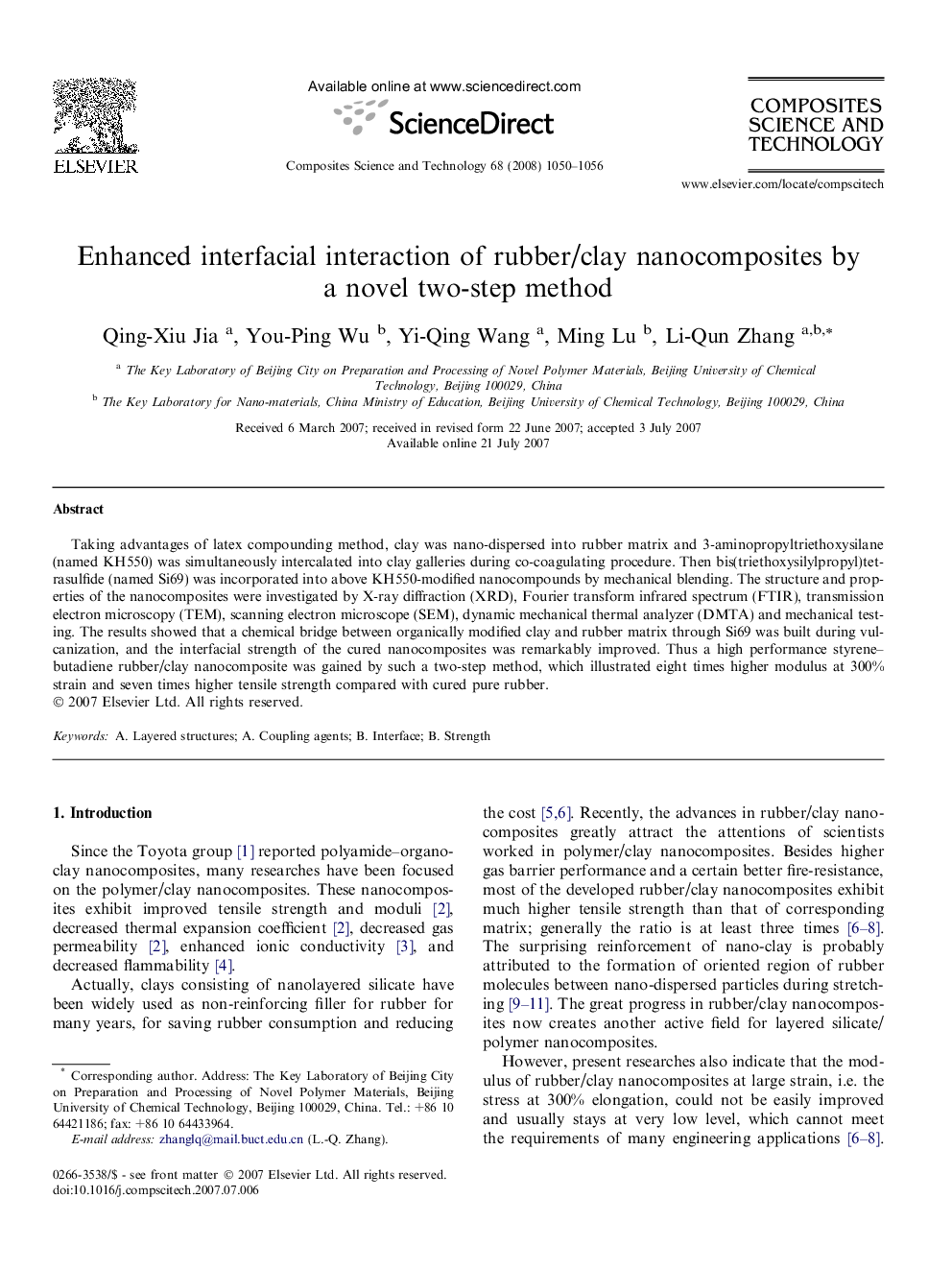| Article ID | Journal | Published Year | Pages | File Type |
|---|---|---|---|---|
| 822389 | Composites Science and Technology | 2008 | 7 Pages |
Taking advantages of latex compounding method, clay was nano-dispersed into rubber matrix and 3-aminopropyltriethoxysilane (named KH550) was simultaneously intercalated into clay galleries during co-coagulating procedure. Then bis(triethoxysilylpropyl)tetrasulfide (named Si69) was incorporated into above KH550-modified nanocompounds by mechanical blending. The structure and properties of the nanocomposites were investigated by X-ray diffraction (XRD), Fourier transform infrared spectrum (FTIR), transmission electron microscopy (TEM), scanning electron microscope (SEM), dynamic mechanical thermal analyzer (DMTA) and mechanical testing. The results showed that a chemical bridge between organically modified clay and rubber matrix through Si69 was built during vulcanization, and the interfacial strength of the cured nanocomposites was remarkably improved. Thus a high performance styrene–butadiene rubber/clay nanocomposite was gained by such a two-step method, which illustrated eight times higher modulus at 300% strain and seven times higher tensile strength compared with cured pure rubber.
